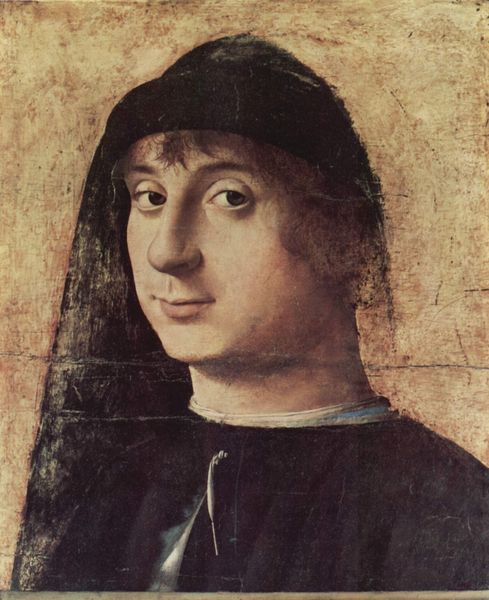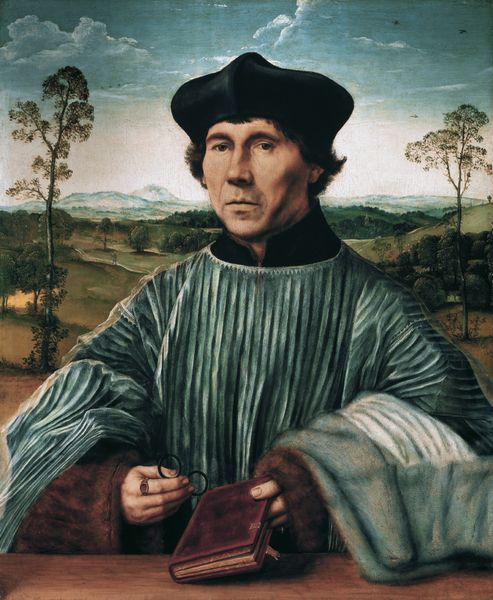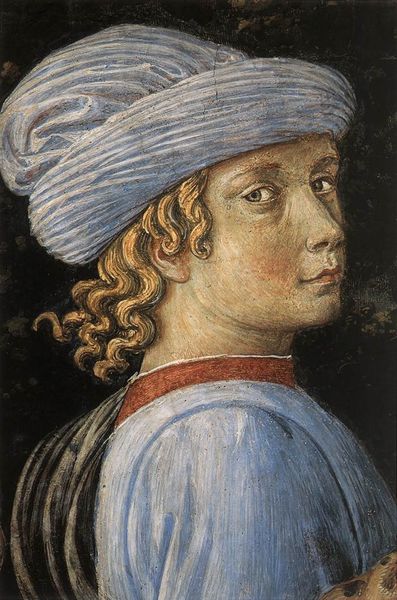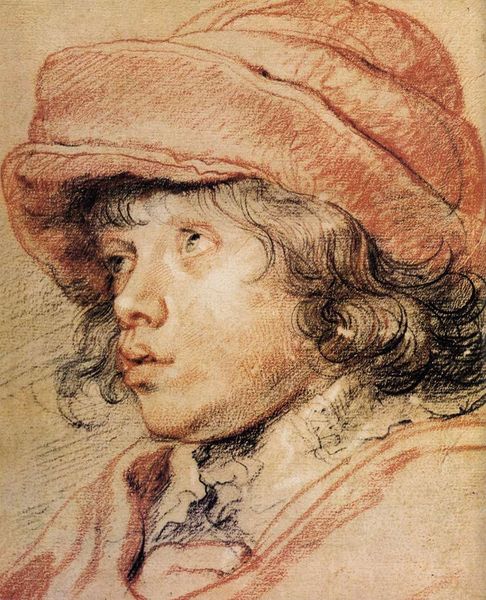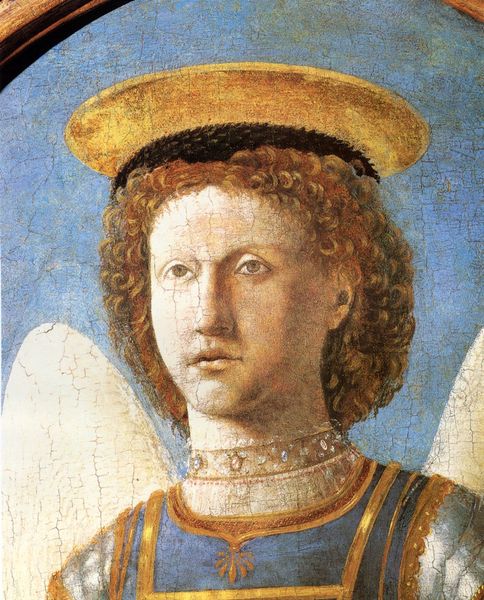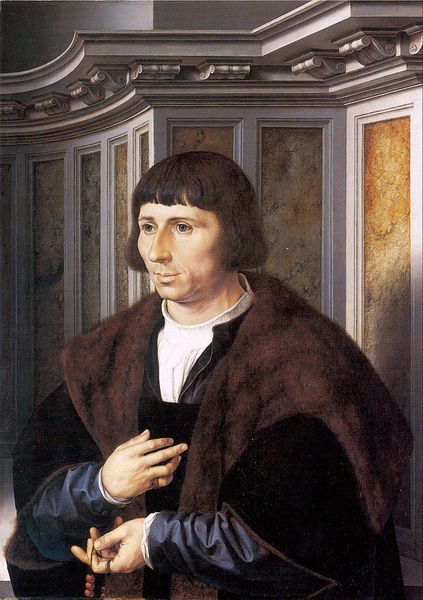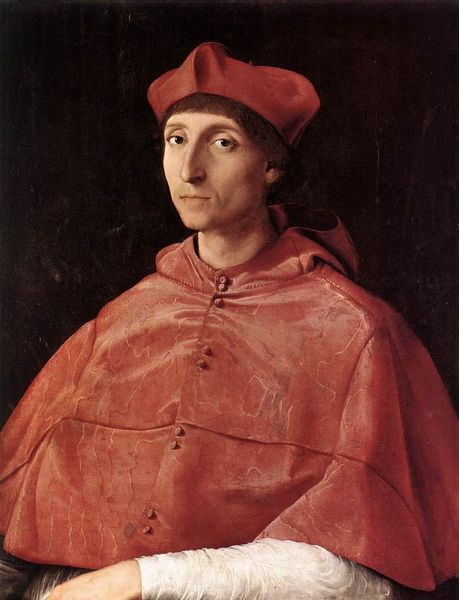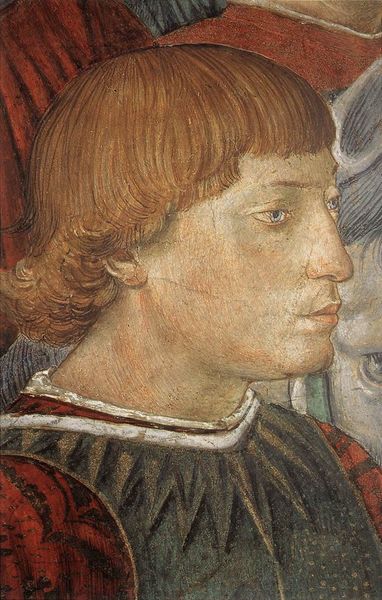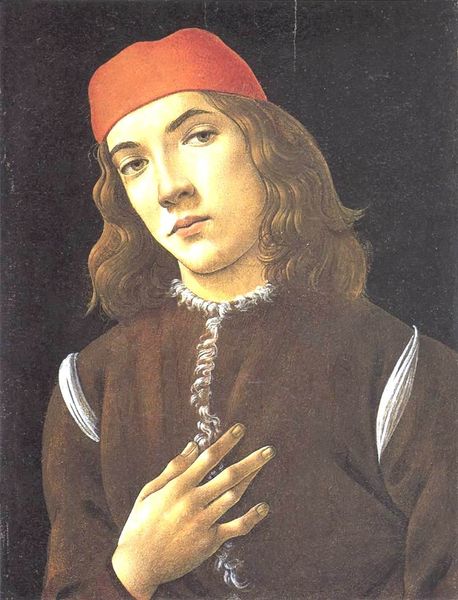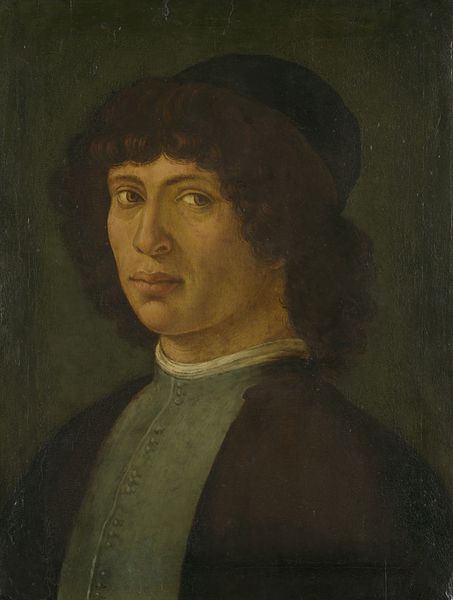
tempera, painting
#
portrait
#
high-renaissance
#
self-portrait
#
tempera
#
painting
#
figuration
#
italian-renaissance
Copyright: Public domain
Editor: So, we're looking at a detail of Filippino Lippi's "Self-Portrait," made with tempera. There's a striking quality in the materiality. The face, despite its smooth appearance from afar, appears quite rough, almost sketch-like, upon closer inspection. What strikes you about the making of this work? Curator: The immediate thing that grabs my attention is the tempera itself. It's a labour-intensive medium. Thinking about the egg yolk emulsion required, its grinding of pigment and application in thin layers demands our understanding about how Lippi considered time, process and his place within a workshop system. We often overlook the artist's labour in these seemingly effortless Renaissance portraits. Why do you think this self-representation, given its production context, was rendered with such meticulous care? Editor: Well, maybe because self-portraits are, inherently, a form of self-promotion? It seems that mastering tempera would show off not just artistry but dedication, therefore it may attract future patronage. Do you think the "roughness" I pointed out actually undermined that goal of portraying refinement and mastery, though? Curator: I disagree. The supposed "roughness" contributes to an "honesty" within the representation, as though we are invited into the artistic practice. It's less about projecting ethereal perfection and more about grounding himself as a skilled craftsperson. Look at the cap— the texture isn't a mistake; rather it amplifies Lippi’s control of the material. Are we focusing so much on individual talent when in fact he wants us to think about his labour? Editor: That's an interesting idea! The imperfections are deliberate, signaling skilled labor instead of concealing it. Now I’m thinking more about how the materiality informs our reading of Renaissance ideas of craft and the artist's role. Curator: Exactly. It’s a reminder that art is also about the handling of material, embedded in specific socio-economic conditions, where making visible labour generates its own artistic capital.
Comments
No comments
Be the first to comment and join the conversation on the ultimate creative platform.
